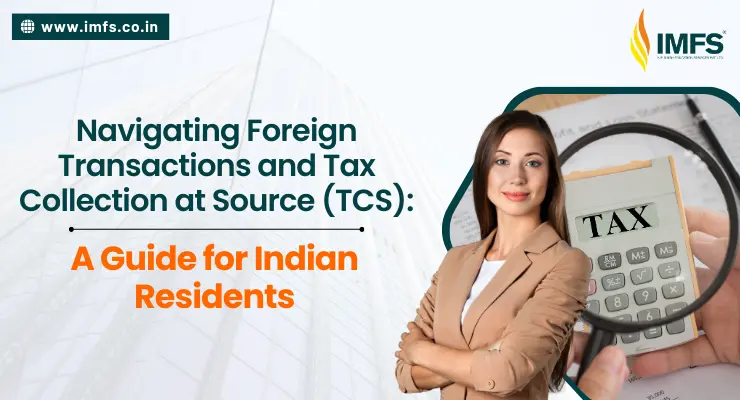Navigating Foreign Transactions and Tax Collection at Source (TCS)

In today’s global economy, engaging in foreign transactions has become increasingly common, especially for Indian residents exploring opportunities beyond their borders. Whether it’s sending money abroad under the Liberalized Remittance Scheme (LRS), purchasing foreign currency, paying for overseas tours, or managing foreign education expenses, understanding the nuances of Tax Collection at Source (TCS) is crucial. This article aims to demystify TCS for a diverse audience aged between 20 to 50, blending formal and engaging language to keep you informed and prepared.
Understanding TCS in Foreign Transactions
TCS is a tax levied on various foreign transactions. The rates vary depending on the nature and amount of the transaction, typically ranging from 0.5% to 20%. This variance is contingent upon factors such as spend limit and the purpose of the transaction.
Who Does TCS Apply To?
Primarily, TCS targets Indian residents engaged in financial interactions with non-residents or foreign entities. Here’s what you need to know:
· Authorized dealers, banks, or entities handling foreign transactions are responsible for collecting TCS.
· TCS is triggered only when transactions exceed certain thresholds, particularly for specific categories like medical and educational expenses.
· Providing your Permanent Account Number (PAN) is mandatory for these transactions to ensure proper tax documentation.
· It is both an individual and business responsibility to comply with TCS regulations and ensure the correct payments are made.
· Collected TCS can be credited against your income tax dues when filing returns.
Thresholds for LRS Payments
The Indian government has set a Rs 7 lakh threshold per individual per financial year for LRS payments. No TCS is levied for remittances within this limit. However, surpassing it incurs TCS at varying rates based on the purpose of remittance.
How to Claim a TCS Refund
Claiming a TCS refund is a straightforward process:
1. Include TCS in Your Tax Return: This initiates the refund process.
2. Verify TCS Credits: Ensure your Form 26AS accurately reflects all TCS amounts.
3. Patiently Await Processing: The Income Tax Department will determine your refund after processing your return.
4. Provide Correct Bank Details: For a hassle-free refund experience.
Essential Documentation
For a smooth TCS and refund process, keep these documents handy:
· PAN Card
· TCS Certificates (Form 27D)
· Form 26AS
· Bank Statements
· ITR Acknowledgment
· Proofs of Investments and Deductions
· Previous Year’s Tax Records
· Aadhaar Card
Checking Your Refund Status
To track your income tax refund status in India: · Visit the e-filing portal (https://www.incometax.gov.in) or the TIN NSDL website (https://tin.tin.nsdl.com/oltas/refundstatuslogin.html).
· Use your PAN and the relevant assessment year to log in and navigate to the refund status section.
Navigating foreign transactions and understanding TCS can be complex, but with the right information and preparation, it becomes a manageable part of your financial journey. Stay informed, stay compliant, and make the most of your global financial interactions.


